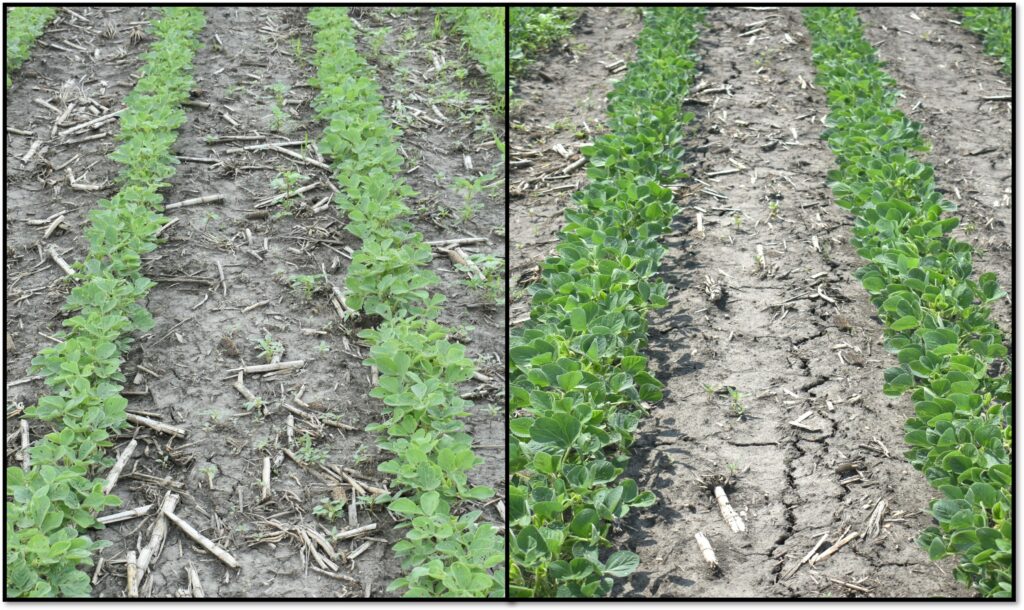Westminster, Colorado, USA
18 February 2025
Farmers in most states often try to plant soybean as early as possible to increase yields. However, planting soybean sooner than later might also require a corresponding change in herbicide application strategy to garner top results.
According to a research article recently published in Weed Technology, a journal of the Weed Science Society of America (WSSA), a strategy utilizing both preemergence (PRE) and postemergence (POST) herbicide treatments optimized weed control outcomes in early planted soybean. Researchers conducted their study in 2021 at three locations across Central Illinois.
 Left: Early-planted soybean at POST; Right: Conventional-planted soybean at POST.
Left: Early-planted soybean at POST; Right: Conventional-planted soybean at POST.
“The research objective was to examine various herbicide treatments applied at different timings and rates to assess the effect on weed control and yield in early planted soybean,” says Aaron Hager, Ph.D., Department of Crop Sciences, University of Illinois, and corresponding author for the study, and WSSA member scientist. “Overall, we found that treatments comprised of a full rate of PRE followed by a POST resulted in the greatest and most consistent weed control at the final evaluation timing.”
The study’s PRE treatments consisted of a S-metolachlor plus metribuzin premix (Boundary) at either half or full-label recommended rates, applied at planting or just before soybean emergence. The POST treatments consisted of glufosinate (Liberty), glyphosate (Roundup), and ammonium sulfate (AMS), with or without pyroxasulfone (Zidua), either at half or full-label recommended rates, applied when weeds reached 10 cm (about 4 inches) tall.
“The full rate of PRE extended the POST application timing two to three weeks for all treatments at all locations except Urbana,” notes Hager. “Full-rate PRE treatments also reduced the time between the POST application and soybean canopy closure. Although pyroxasulfone added to POST treatments did not consistently reduce late season weed emergence, this may be due to earlier soybean development and canopy closure from early planting, which suppressed weeds naturally.”
PRE-only treatments failed to perform as well as either POST-only or PRE plus POST herbicide treatments in early planted soybean, points out Hager. “For optimal effect on both weed control and yield, the PRE plus POST combo proved best for early planted soybean,” sums up Hager.
More information about early planted soybean weed control can be found in the article, “Weed Management in Early Planted Soybean – Early Planted Soybean Weed Management as Effected by Herbicide Application Rate and Timing.” The article is among the first available in 2025 from Weed Technology, a Weed Science Society of America journal, published online by Cambridge University Press.
About Weed Technology
Weed Technology is a journal of the Weed Science Society of America, a nonprofit scientific society focused on weeds and their environmental impact. Weed Technology publishes original research and scholarship in the form of peer-reviewed articles focused on understanding how weeds are managed. The journal focuses on applied aspects concerning weed management in agricultural systems, weed/crop management systems, new weed problems, new technologies for weed management, herbicides used to manage undesired vegetation, and special articles emphasizing technology transfer to improve weed control. To learn more, visit www.wssa.net.